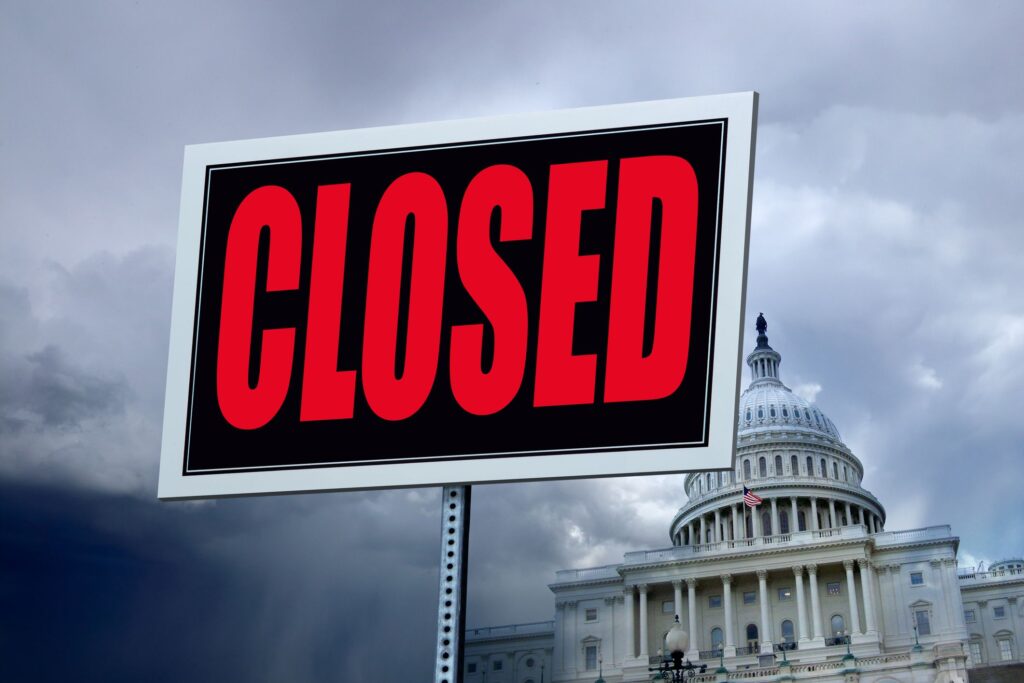After Congress failed to pass a funding bill by October 1, the country entered a government shutdown. Lawmakers now face another critical deadline, but negotiations remain at a standstill.
While essential employees continue to work, their paychecks won’t be processed if Congress doesn’t pass a budget by October 13. The shutdown also threatens programs like WIC, which could run out of funds within two weeks, and SNAP, which may face similar challenges if the stalemate extends past October.
With no resolution in sight, the shutdown’s effects are starting to ripple through the economy. Delayed reports, including the latest jobs data, make it harder to gauge the full impact.
Sign up for Kiplinger’s Free Newsletters
Profit and prosper with the best of expert advice on investing, taxes, retirement, personal finance and more – straight to your e-mail.
Profit and prosper with the best of expert advice – straight to your e-mail.
Why October 15 matters
October 15 is an important deadline, in part because it’s the next scheduled pay date for active-duty military service members. Considered essential employees, active-duty military have continued working during the shutdown, but if Congress doesn’t pass a budget by October 13, the troops’ payroll won’t be processed on time.
Several key federal programs depend on a timely budget. The Special Supplemental Nutrition Program for Women, Infants, and Children (WIC), used by millions of families, is particularly vulnerable and could run out of funding.
Since this government shutdown takes place at the start of the federal fiscal year, WIC agencies don’t have money to issue to participants, and the program’s funding could run out in as little as two weeks.
The Supplemental Nutrition Assistance Program (SNAP) loads money onto participants’ cards at the beginning of the month, so participants already have their money for the month of October. But if the government shutdown isn’t resolved by the end of the month, SNAP could also face funding issues.
Economists are warning of increased economic risk if the government shutdown isn’t resolved. The monthly jobs report should have been released this past Friday, but its release has been postponed.
Without that data, it’s difficult to monitor the economic damage caused by the shutdown, creating a sense of uncertainty around the United States economy.
Where negotiations stand now

(Image credit: Kevin Dietsch / Staff)
The current negotiations center around expiring health insurance subsidies. If those subsidies expire, middle-class Americans could see their health insurance premiums double or triple.
Democrats are demanding that Congress permanently extend the health insurance tax credits before the open enrollment period begins on November 1. Republicans refuse to commit to extending subsidies while negotiating a budget, stating that they will review the subsidies once the government shutdown ends.
As of Monday, the Senate voted on the funding bills needed to end the shutdown six times, failing to reach the 60 votes needed. The Senate is scheduled to reconvene on October 8 for another vote.
What happens if the deadline passes
If Congress fails to come to an agreement and reopen the government by October 13, there could be many consequences. Federal workers and contractors, including military members, will be forced to go without their next paycheck, which could be a major financial strain for individuals and families without substantial savings.
After the 2019 government shutdown, Trump signed a law guaranteeing back pay for federal employees once a shutdown ends. However, a draft White House memo released Tuesday indicates that workers on unpaid leave may not be guaranteed compensation this time.
When questioned about back pay, Trump responded, “I would say it depends on who we’re talking about.”
While programs like Social Security and Medicare will continue to issue payments, customer service and new application processing times will be slowed because of limited staff.
A prolonged government shutdown could significantly affect federally funded programs. WIC funding could run out in just two weeks, leaving financially vulnerable families with even less money for food. Should the shutdown last through the end of the month, SNAP recipients could find themselves in a similar position.
If SNAP and WIC funding runs out, food banks and food pantries are likely to see additional demand as program recipients need more help affording food heading into the holidays.
Who’s feeling the pressure?
Both Republicans and Democrats are feeling the pressure to reach an agreement. There’s already plenty of attention on the 2026 midterm elections, which could potentially change the majority in the House and Senate.
In a poll conducted by CBS news, 39% of respondents blame Trump and congressional Republicans for the shutdown, while 30% blame Democrats and 31% hold both parties responsible.
What it means for your money
It’s impossible to predict how long the government shutdown will last. If you rely on government pay, benefits or contracts, it’s important to be cautious with your money at this time. Avoid any unnecessary purchases and try to save as much money as possible.
There are several resources available for government employees affected by the shutdown. Government employees created a crowdsourced spreadsheet of shutdown assistance programs for employees.
Additionally, Maryland launched a Federal Shutdown Loan Program that provides support to Maryland residents who are essential federal employees not receiving pay.
Staying informed about the government shutdown can help you navigate the uncertainty. It can also help you learn about available resources and assistance. Even if you don’t rely on government pay, the shutdown has widespread effects on the economy, so it’s important to stay informed about the latest updates as Congress continues to work toward a resolution.


